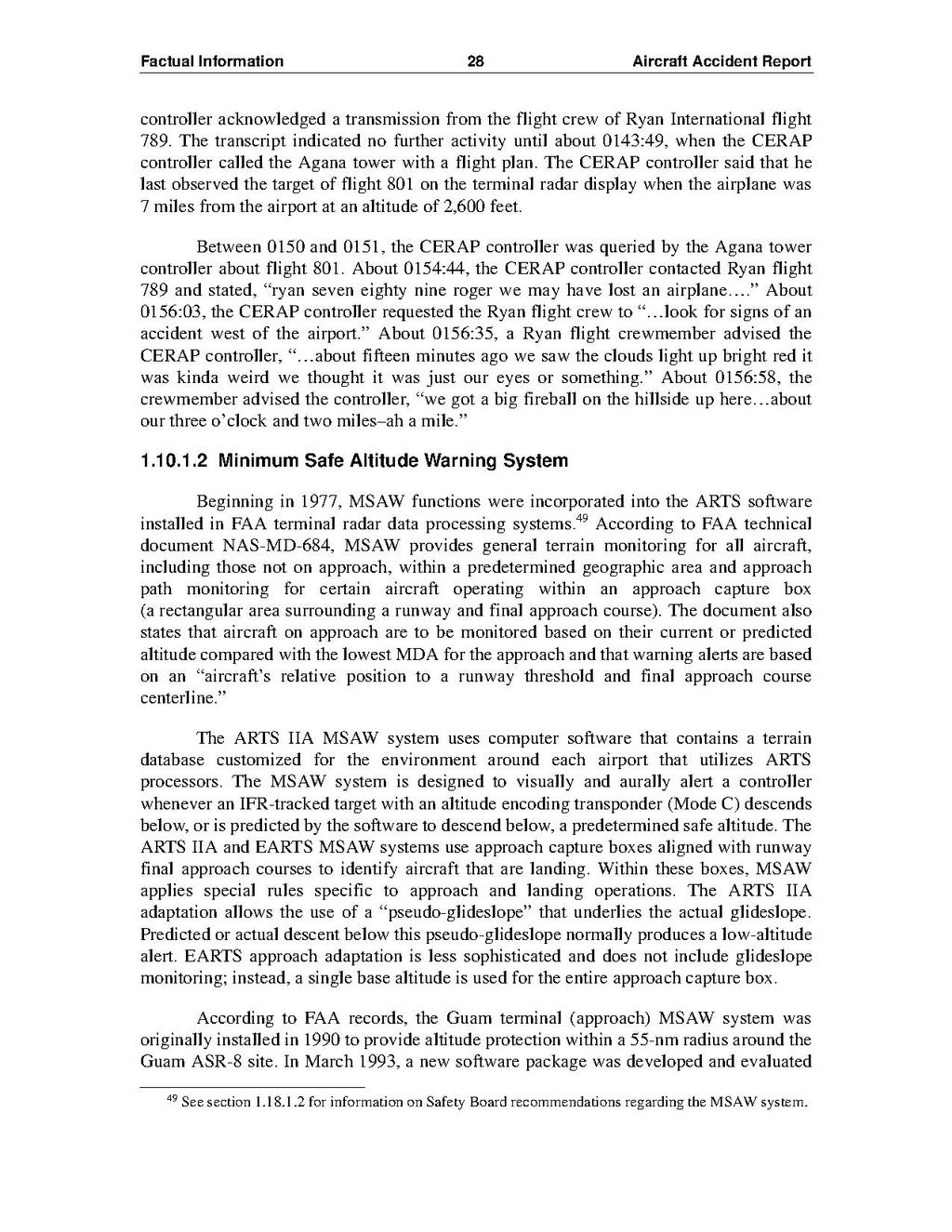controller acknowledged a transmission from the flight crew of Ryan International flight 789. The transcript indicated no further activity until about 0143:49, when the CERAP controller called the Agana tower with a flight plan. The CERAP controller said that he last observed the target of flight 801 on the terminal radar display when the airplane was 7 miles from the airport at an altitude of 2,600 feet.
Between 0150 and 0151, the CERAP controller was queried by the Agana tower controller about flight 801. About 0154:44, the CERAP controller contacted Ryan flight 789 and stated, "ryan seven eighty nine roger we may have lost an airplane...." About 0156:03, the CERAP controller requested the Ryan flight crew to "...look for signs of an accident west of the airport." About 0156:35, a Ryan flight crewmember advised the CERAP controller, "...about fifteen minutes ago we saw the clouds light up bright red it was kinda weird we thought it was just our eyes or something." About 0156:58, the crewmember advised the controller, "we got a big fireball on the hillside up here...about our three o'clock and two miles?ah a mile."
1.10.1.2 Minimum Safe Altitude Warning System
Beginning in 1977, MSAW functions were incorporated into the ARTS software installed in FAA terminal radar data processing systems.[1] According to FAA technical document NAS-MD-684, MSAW provides general terrain monitoring for all aircraft, including those not on approach, within a predetermined geographic area and approach path monitoring for certain aircraft operating within an approach capture box (a rectangular area surrounding a runway and final approach course). The document also states that aircraft on approach are to be monitored based on their current or predicted altitude compared with the lowest MDA for the approach and that warning alerts are based on an "aircraft's relative position to a runway threshold and final approach course centerline."
The ARTS IIA MSAW system uses computer software that contains a terrain database customized for the environment around each airport that utilizes ARTS processors. The MSAW system is designed to visually and aurally alert a controller whenever an IFR-tracked target with an altitude encoding transponder (Mode C) descends below, or is predicted by the software to descend below, a predetermined safe altitude. The ARTS IIA and EARTS MSAW systems use approach capture boxes aligned with runway final approach courses to identify aircraft that are landing. Within these boxes, MSAW applies special rules specific to approach and landing operations. The ARTS IIA adaptation allows the use of a "pseudo-glideslope" that underlies the actual glideslope. Predicted or actual descent below this pseudo-glideslope normally produces a low-altitude alert. EARTS approach adaptation is less sophisticated and does not include glideslope monitoring; instead, a single base altitude is used for the entire approach capture box.
According to FAA records, the Guam terminal (approach) MSAW system was originally installed in 1990 to provide altitude protection within a 55-nm radius around the Guam ASR-8 site. In March 1993, a new software package was developed and evaluated
- ↑ See section 1.18.1.2 for information on Safety Board recommendations regarding the MSAW system.
